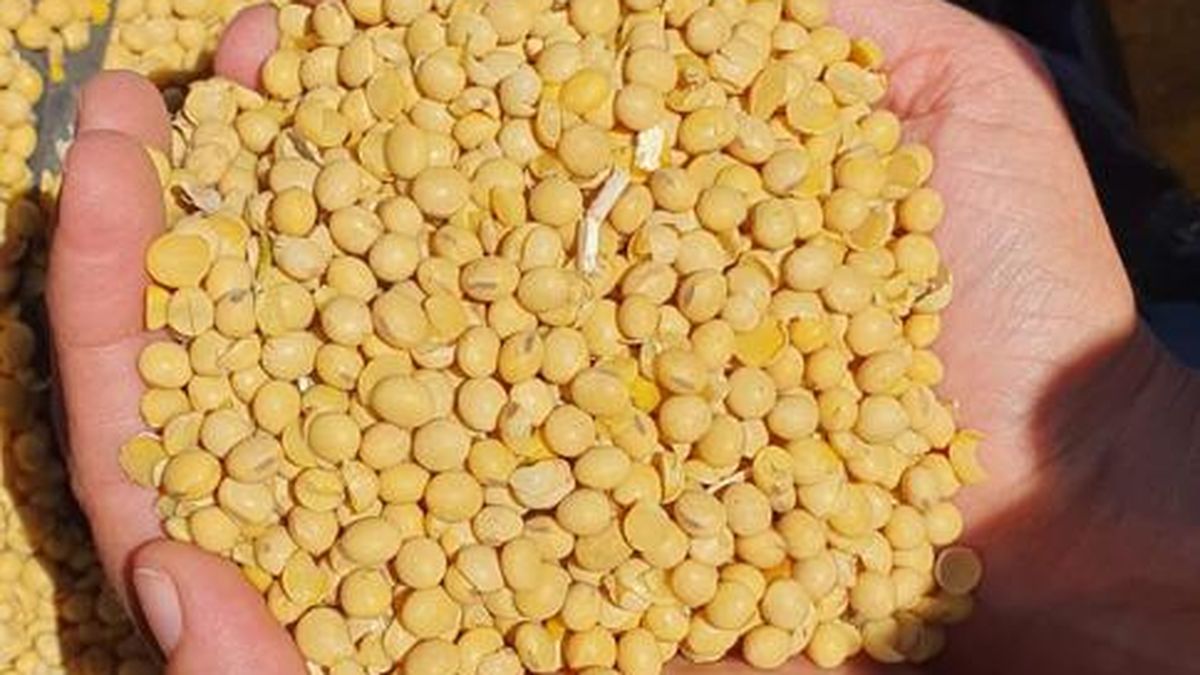However, this leap in the work of implantation of the oilseed taking advantage of the slightest presence of humidity in the soils, The BCR anticipates that one million hectares will be planted during December, which is something “unprecedented” for the region and that will have an impact on yields.
That is why the rains will be crucial over the next month to allow complete the implementation work and ensure the good condition of the crops.
The drought that hit producers had a strong impact on the wheat harvest. The rains that came last week were not enough to recover the last of the wheat, but They gave moisture to the land for soybean planting. However, from the sector they demanded government measures to anticipate losses or low profitability. One of those measures was a new edition of thesoybean dollar, program that the Government announced this Friday and that will give $230 for each currency obtained from the export of the oilseed.
According to the engineers of the stock exchange entity, “If it does not rain 100 millimeters in December, the situation will become very serious for all the crops in the area“.
But, according to a report, from the BCR they see it difficult to reach such a volume: “There may be extraordinary events, such as what happened with the 90 mm that Pergamino received (in the rains two weeks ago). But it is not a change in trend, it is an event.”
“More cooling in the Pacific is likely soon. Changes in global conditions are not in sight. We are going to be well below (the region’s average of 120 to 160 mm for December) if we continue business as usual . The situation posed by the weather to crops is really very complex this year“, warned at work.
so far November the accumulated average rainfall for the region was 44 mmwhen the monthly historical is from 110 to 130 mm. “The south of Santa Fe, part of the south center of Santa Fe and the corridor of the extreme northeast of Buenos Aires even accumulated 30 mm in the whole month”, highlighted the BCR.
As for the temperaturesduring the last seven days the region experienced “very high levels“who were between 35ºC and 38ºC.
“The situation is very serious, we are entering a very demanding period: just to compensate for evapotranspiration losses, taking into account the need for a permanent meadow about 5 mm per day is needed in the soil. If the calculations are made taking into account the values of temperatures and solar radiation these days, they are 7 mm per day,” they warned.
At the national level, the situation is similar, with very marked delays in the implementation of summer crops.
According to Buenos Aires Grain Exchange (BCBA), to date only 19.4% of the 16.7 million hectares of stipulated soybeans have been implementedwhat determined a delay with respect to the previous campaign of 20 percentage points, with the greatest delays registered in the productive nuclei of the center of the national agricultural area: the center-north of Santa Fe, the north of La Pampa and the west of Buenos Aires.
Nevertheless, some relief can be expected in terms of rainfall in various areas of the countrysince the weekly forecast of the entity indicates that towards the middle of the week “the passage of a storm front will begin, which will produce rains in the southwest of the agricultural area, while the northwest of its extension will receive a contribution of precipitations from the tropic”.
“Most of the NOA, western Chaco, northwestern Paraguay, most of Buenos Aires, southern Córdoba, eastern Cuyo, northern La Pampa, and northeastern Uruguay They will receive moderate to very abundant rainfall, between 10 and 75 mm with pockets with low values,” the report detailed.
Source: Ambito
David William is a talented author who has made a name for himself in the world of writing. He is a professional author who writes on a wide range of topics, from general interest to opinion news. David is currently working as a writer at 24 hours worlds where he brings his unique perspective and in-depth research to his articles, making them both informative and engaging.




